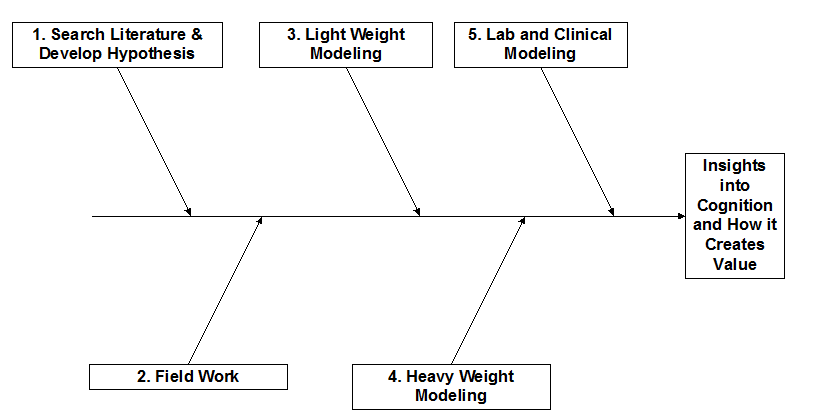Cognitive Modeling for Innovators & Designers
Wednesday, August 29th, 2012 Cognitive design makes an unique contribution to improvement and innovation efforts by focusing on the workflow between the ears. By discovering and documenting mental processes and psychological needs cognitive designers bring important new requirements, constraints and opportunities to the table. There are five ways to get at the workflow between the ears:
Cognitive design makes an unique contribution to improvement and innovation efforts by focusing on the workflow between the ears. By discovering and documenting mental processes and psychological needs cognitive designers bring important new requirements, constraints and opportunities to the table. There are five ways to get at the workflow between the ears:
- Search the literature and develop a hypothesis. If someone else has already developed a cognitive model of the domain you are working in make use of it. This can include general processes such as recognition-primed decisions making or something more specific such as threat detection in battle field management.
- Do some fieldwork. This means going out and watching and making inferences about what people are thinking and feeling. Ethnographic methods and empathy mapping used in design thinking are popular examples.
- Use lightweight modeling techniques. These often include using validated psychological assessment instruments to measure individual’s strengths, weaknesses and needs against a known model. For example, two instruments that are very useful for cognitive designers are the learning style inventory that gives insights into how individuals learn from experience and the sensory profile that provides a measure of how sensitive an individual is to sensory stimulation. Both these instruments are very useful when you are designing for behavior change.
- Use heavyweight modeling techniques. These are cognitive engineering and artificial intelligence techniques and include for example cognitive task analysis and protocol analysis. With these techniques experts are sometimes asked to think-aloud while they are doing the mental work of interest. These verbal reports are treated as data and are analyzed and scored to develop a model of the mental process. Another technique is the Zaltman Metaphor Elicitation Technique that focuses on the collection and analysis of images that users provide to infer the mental models and metaphors that are guiding their thinking. While the use of these heayweight techniques requires considerably more expertise than the previous techniques, they are essential for many application of cognitive design.
- Lab and Clinical Modeling: These are often the most expensive and complex to use and include for example eye-motion. EEG and brain scanning studies. The idea is to directly measure brain states or related psychological states to understand how people think-and-feel when interacting with a product or other artifact. Usually this happens in a cognitive or neuroscience lab but over the last few years companies have formed to make the techniques more accessible especially in advertising, marketing and brand management. See NeuroFocus for example.
It is best to work these in order as each provides context and insights for how best to scope the next one in line.
While many current innovation methods stress field work and rapid prototyping with users, it is often necessary to use light-and-heavy weight modeling methods to generate real insights into how to move hearts and minds.





